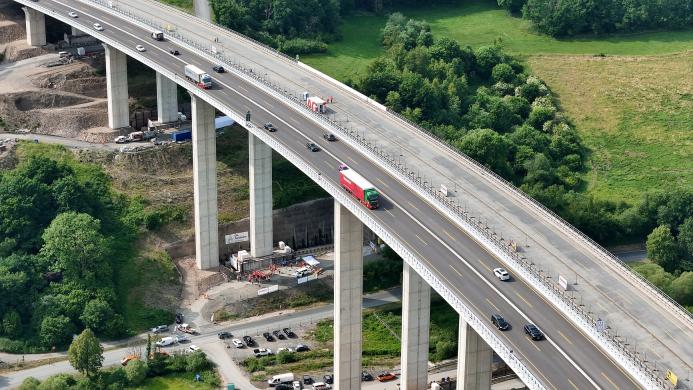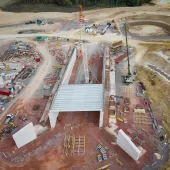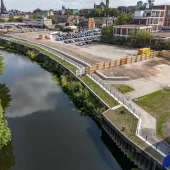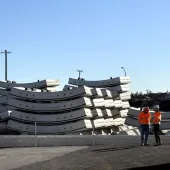Rinsdorf viaduct moved into place in German engineering first
A 40,000-tonne section of Germany’s A45 Rinsdorf viaduct has been moved into place using an innovative transverse shift technique, completing a complex multi-stage bridge replacement project led by a consortium headed by Strabag.
The shift, which took place over 3–4 June 2025, involved pushing the 485.5-metre-long concrete and steel structure—including piers and foundations—20.59 metres to its final position near Siegen in North Rhine-Westphalia. It is the first time a highway bridge has been moved in one piece, including its substructure, on this scale in Germany.
Described as a "masterpiece of engineering" by federal state secretary Dr Claudia Elif Stutz, the operation saw the structure inched across specially prepared sliding tracks using 24 hydraulic jacks—four on each of the six piers. Teflon plates pre-treated with grease were placed between the piers and foundations to reduce friction and enable the bridge to move at a rate of around one metre per hour. The shift was completed in 15 phases, each 1.4 metres long, over a 20 to 30-hour period.
The Rinsdorf viaduct, originally built in 1967, forms part of a major renewal of two ageing valley crossings on the A45. A new twin-section replacement has been constructed in stages, allowing traffic to continue while demolition and construction progressed. The first new structure was built adjacent to the existing bridge, which was demolished in 2022. Once the second section was completed, the first was moved laterally into its final alignment.
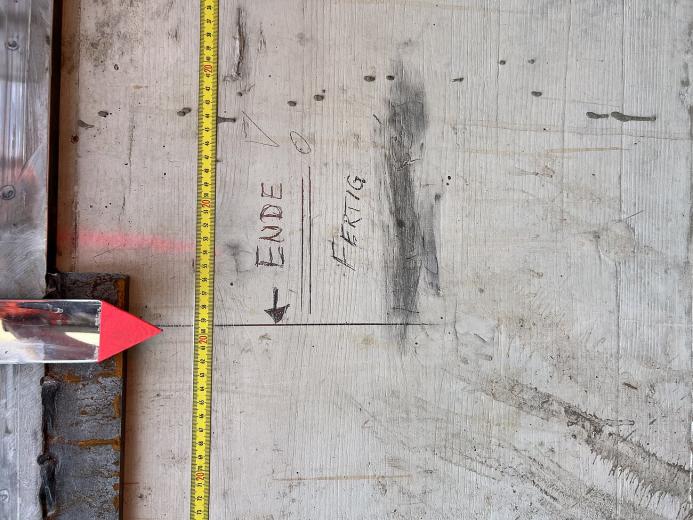
Autobahn GmbH, the public body overseeing Germany’s federal highways, called the procedure “an impressive symbol of technical possibility” and praised the collaborative efforts between engineers, contractors and government. Civil engineering experts were closely involved from the outset to assess risks and help select the safest and most effective construction method.
Peter Hübner, executive board member at Strabag AG, said the success of the project lay in “a well-coordinated team effort, engineering expertise, and a shared commitment to innovation.”
While the project is located in Germany, the methods used—including the use of precast segments, temporary offset construction, and hydraulic sliding systems—are increasingly relevant to UK concrete infrastructure work, particularly in tight urban sites or where traffic continuity is essential.

